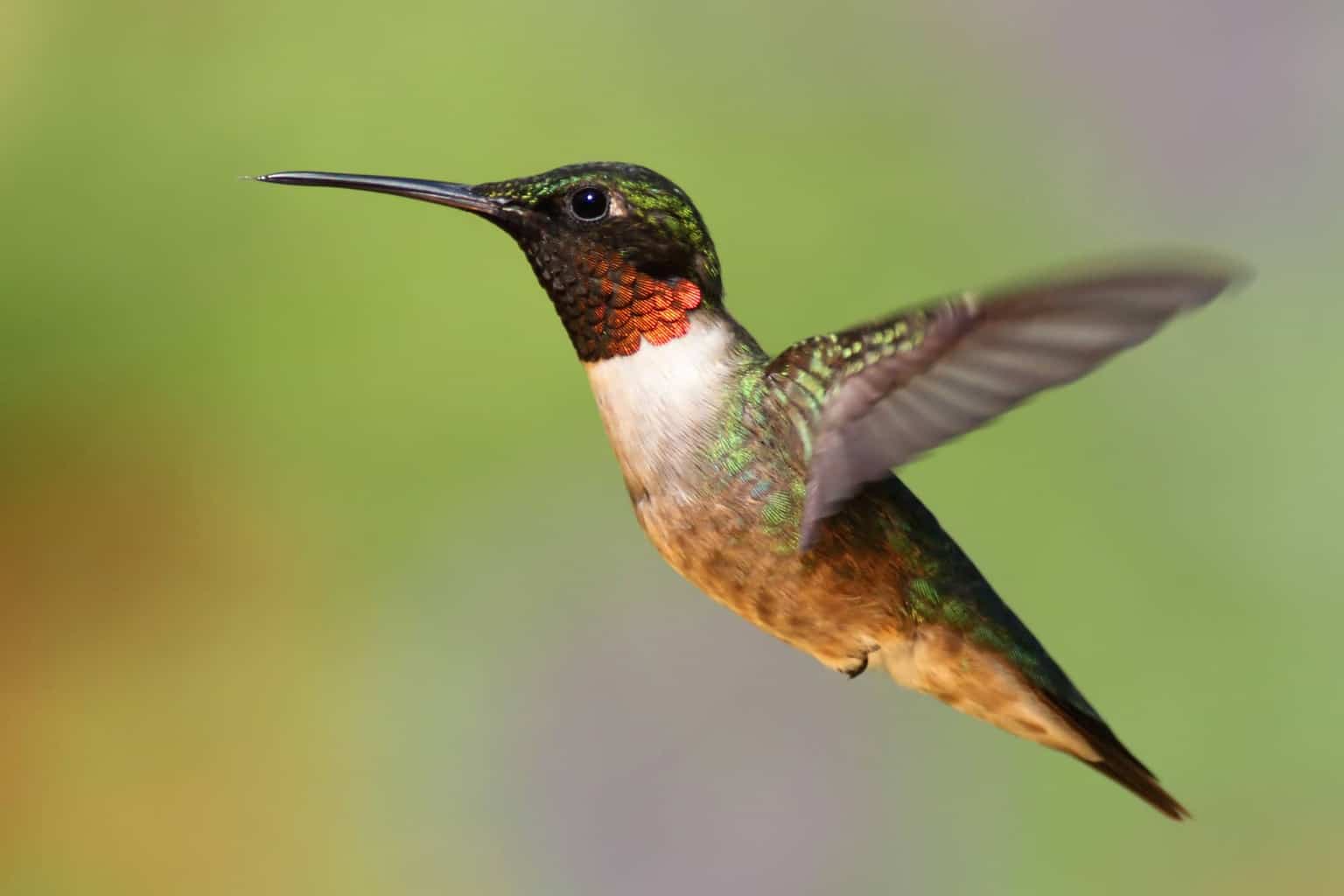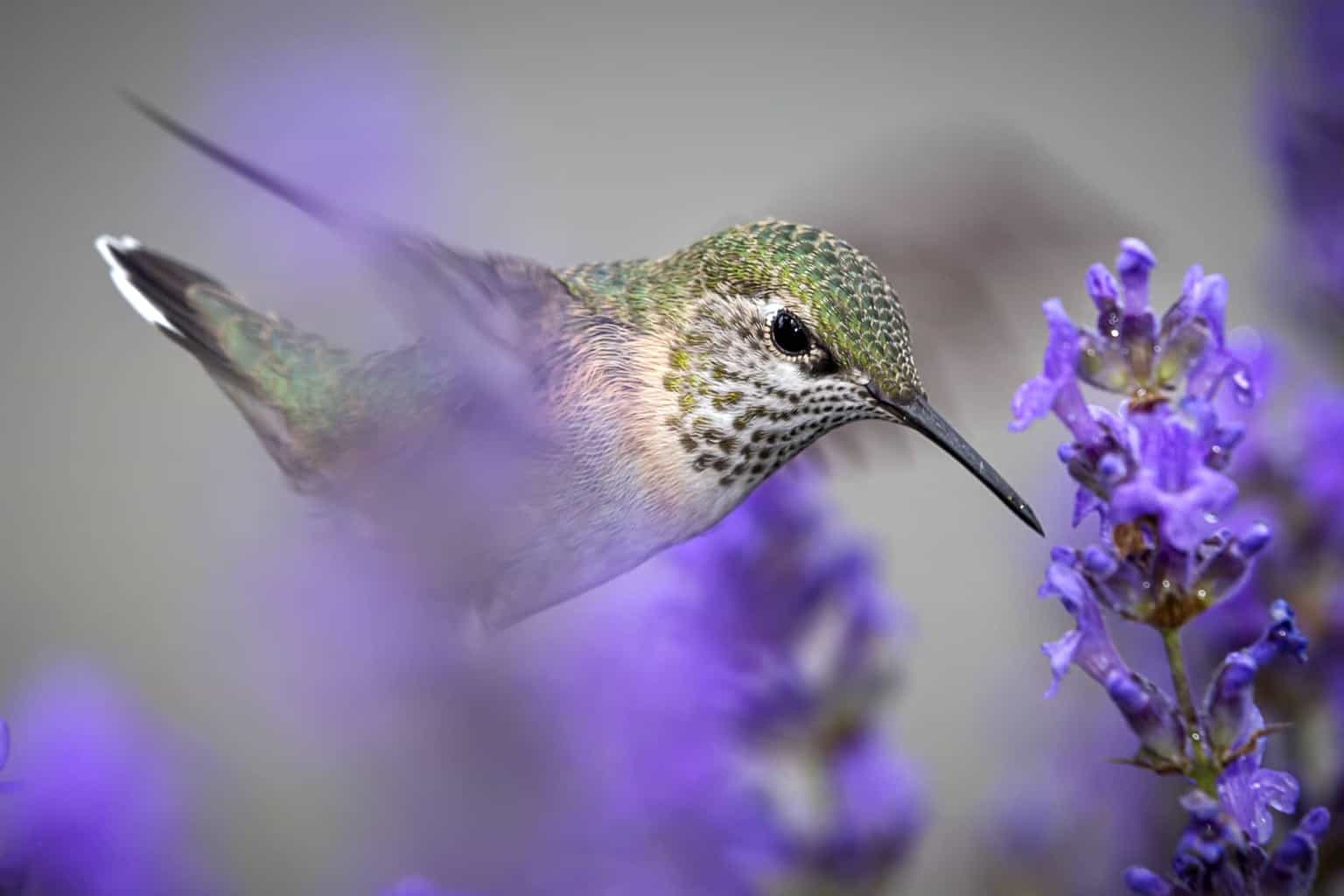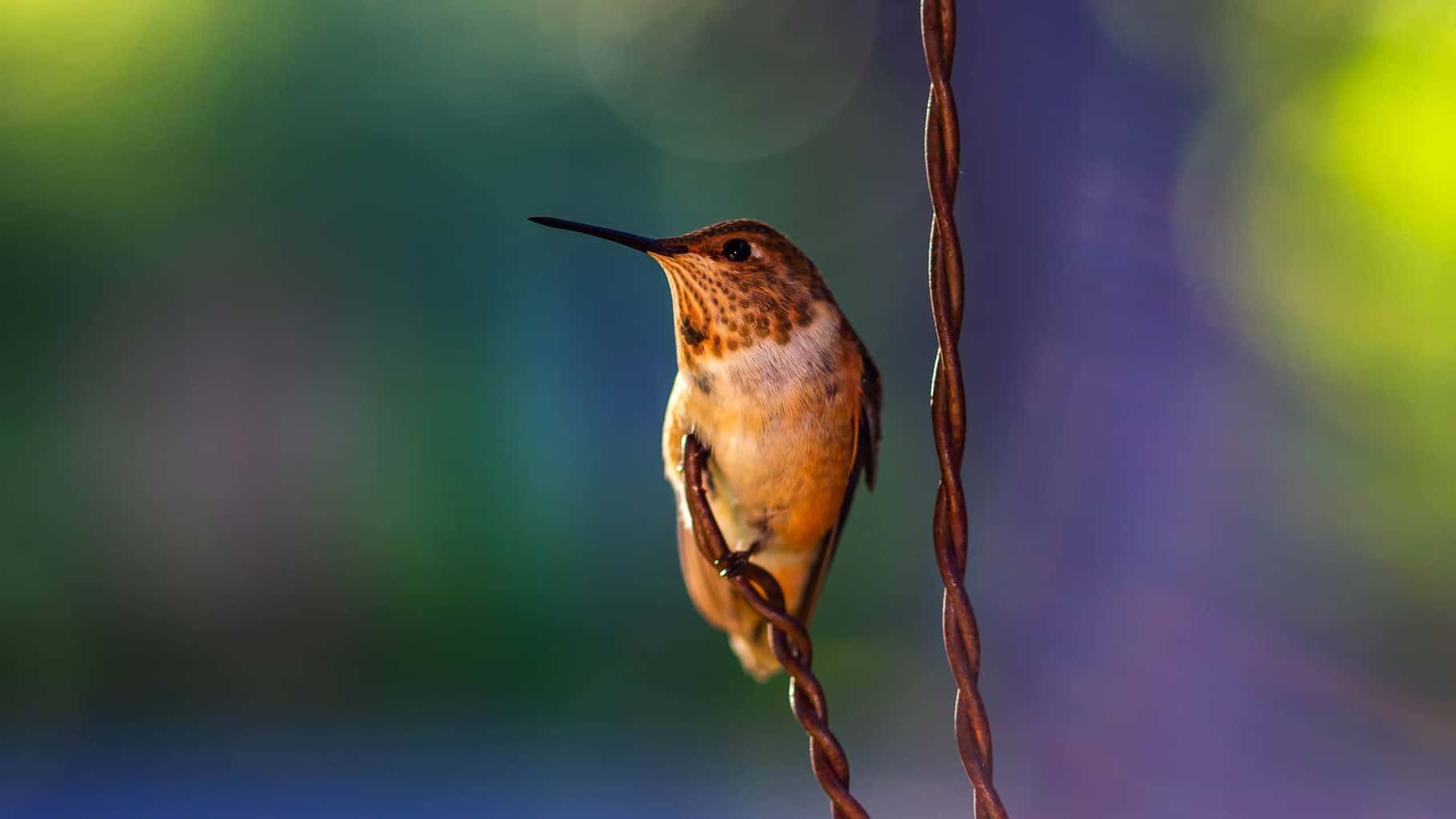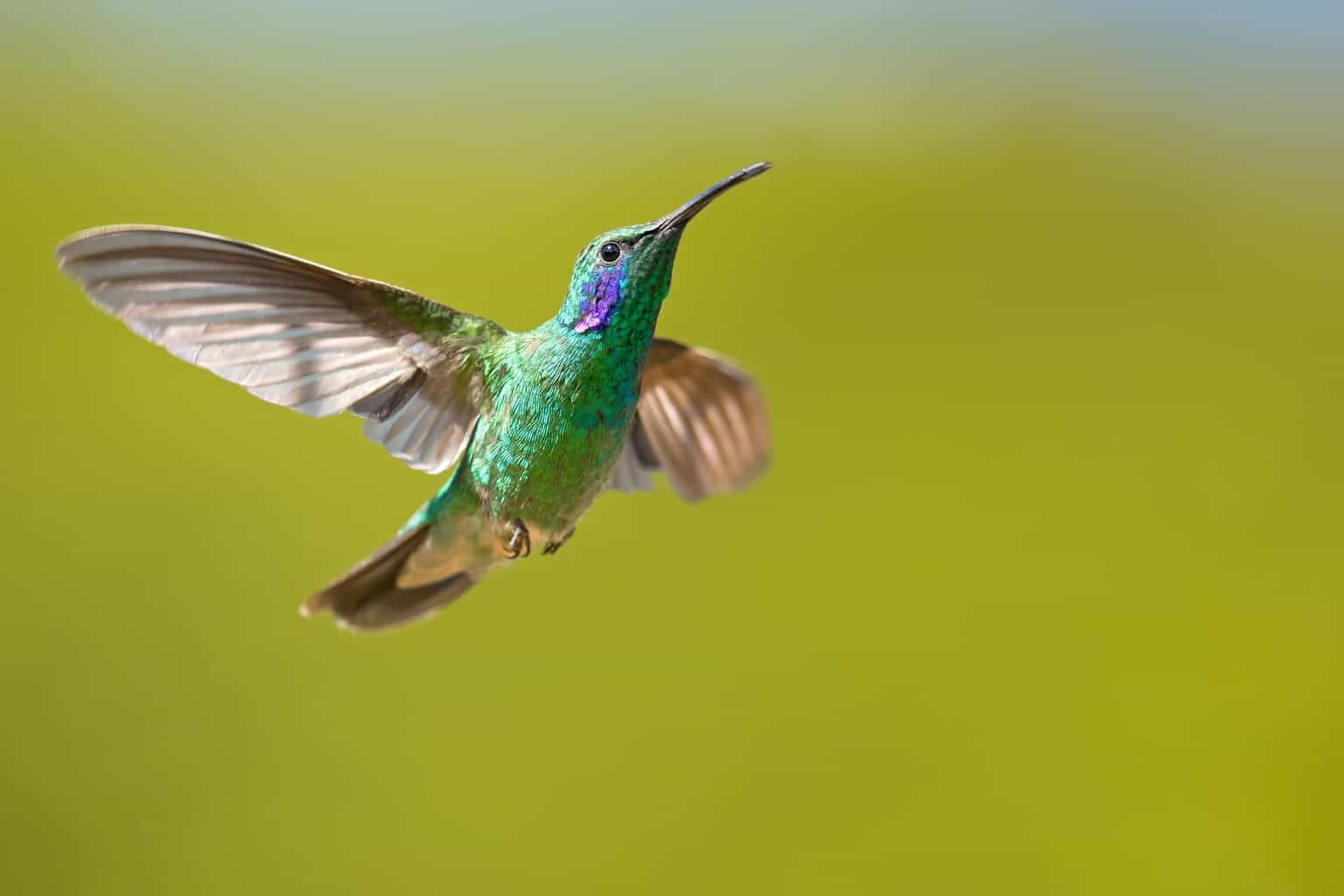Connecticut is a lovely state with 5,543 square miles of forests, mountains, and clearings, including the wonderful bodies of water found there. This state is well known for being the home of Yale University, ESPN, and stunning fall foliage. But this state is also home to 173 different species of birds.
Some hummingbird species are considered a rare sight by bird watchers in Connecticut, but there is always the possibility of seeing an elusive hummingbird during the migratory season.
If you stay in Connecticut and hummingbirds, this list is for you! Keep reading to find out which hummingbirds you might be able to see.
Hummingbirds You Can Find In Connecticut
You can find six different hummingbird species in Connect. One one of them is a regular visitor to the state, while the other five species are a rarer sight. So, let us go through the hummingbirds you may be able to see in Connecticut.
Ruby-Throated Hummingbird

- Scientific Name: Archilochus colubris
- Length: 2.8 – 3.5 inches
- Weight: 0.071 – 0.212 ounces
- Wingspan: 3.1 – 4.3 inches
- Native To: Large Area Of Eastern North America
These popular birds will have a metallic green color on their backs and grayish-white on their bellies, with near-black wings. The Ruby-throated hummingbird’s bill is long, very thin, and straight and will grow to about 0.79 inches in length.
Ruby-throated hummingbirds are sexually dimorphic; this species’s sexes will exhibit different characteristics. The adult male has a gorget, a ruby-red throat patch narrowly bordered with a thin velvety black line on the top. They have a black forked tail with a glint of violet when in the sun.
The female Ruby-throated hummingbird has a notched tail, with the outer feathers banded in black, green, and white. They have a white throat that is usually plain but can be lightly marked with dusty stipples or streaks.
These beautiful birds are the most common hummingbird you will see in Connecticut, but you will not see them all year round, as this bird does migrate during the winter. Ruby-throated hummingbirds will migrate to Mexico, Central America, Canada, Florida, and other states in the winter.
This hummingbird has the most extensive range map of all the hummingbirds in America. They do not form breeding pairs, as the males will immediately depart and leave the female to do all the parental duties.
Their favorite source of nectar is flowering trees and native nectar-filled flowers, but they will also eat small insects as well as spiders. These tiny creatures provide an essential source of protein for the birds and some minerals and vitamins that the adult hummingbird needs to stay healthy.
Broad-Billed Hummingbird

- Scientific Name: Cynanthus latirostris
- Length: 3.1 – 3.9 inches
- Weight: 0.1 – 0.14 ounces
- Wingspan: 5.1 inches
- Native To: Mexico And Southwestern United States
Broad-billed hummingbirds are tiny hummingbirds with a long, bright red bill with a dark black tip. They have a metallic green dorsal, leading to a duller green on the bird’s forehead and crown.
This hummingbird is sexually dimorphic, so the sexes will look different. The male of this species has dark green coloring, white under-tail coverts, and a blue throat.
The male’s broad tail is a deep blackish blue color, and the male’s flight feathers are a brown-gray color. The female has a white eye stripe located at the back of each eye, and her belly is a pale white/gray, with the tail feathers being white-tipped.
The juveniles resemble the females in coloring, but once they mature, the color will change if the bird is a male. The adult plumage should begin to develop when the bird reaches six months of age.
These hummingbirds prefer to live in locations with streamside groves and thick vegetation, favoring the Arizona Sycamore tree, the Fremont Cottonwood, and mesquite plants.
If you want to attract these birds to your hummingbird garden, plant some of these trees or plants, and focus on providing their favorite food source. But what do Broad-billed hummingbirds enjoy eating?
These hummingbirds eat insects and nectar from flowers and flowering trees as their primary food source, with a preference for yellow and red flowers. Homemade nectar from a quality hummingbird feeder, along with water for drinking, will not go unappreciated, either.
Calliope Hummingbirds

- Scientific Name: Selasphorus calliope
- Length: 2.8 – 3.9 inches
- Weight: 0.071 – 0.106 ounces
- Wingspan: 4.3 inches
- Native To: Mainly United States, Canada, And British Columbia
Calliope hummingbirds have glossy green-colored feathers on their backs and crowns, and white bellies. Males have unique throat pattern of wine-red streaks on their magenta throats, with green flanks and a darker tail than the female.
The female has the same coloring as the juveniles; they have a pinkish color on their flanks, dark streaks on their throats, and dark tails with white tips. The Calliope hummingbird is not sexually dimorphic like most other hummingbirds.
Calliope hummingbirds are the smallest native bird in the United States and Canada and will migrate to other states during the winter.
So, what habitat does this hummingbird prefer in Connecticut? When they are in Connecticut during the winter, these hummingbirds will stay well-hidden in lowland, bushy areas.
While these tiny birds are in the area, they will feed on nectar from tubular flowers or eat small insects to get the protein needed for their bodies to function correctly.
Rufous Hummingbird

- Scientific Name: Selasphorus Rufus
- Length: 3.1 inches
- Weight: 0.071 – 0.176 ounces
- Wingspan: 4.3 inches
- Native To: Large Area Of the United States
This hummingbird is one of the prettier ones as both males and females have bright-colored feathers.
The male has a white chest with a reddish-brown or rufous face; his flanks and tail are the same color as his orange-red throat with a gorget and a white patch below the throat. Males will also have some green on their crowns and backs.
The female’s coloring is slightly different from the male, but not enough for this species to be considered a sexually dimorphic bird. Females have white, green, and rusty patches in the center of their speckled throat, and they have darker, rufous colored tails with white tips.
The Rufous hummingbird is known for its flying skills, and this tiny hummingbird files 2,000 miles in its yearly migratory transits. These aggressive birds are very territorial and will chase away larger birds from their favorite nectar feeders.
The female hummingbirds are also larger than the males. These hummingbirds will not lay their eggs in Connecticut, as they prefer to lay their eggs on high mountainside or forest locations.
The Rufous hummingbird will migrate through the lower lying lands like Connecticut from May through to September to take advantage of the lovely wildflower season. Mature male Rufous hummingbirds will often migrate before the females and juveniles.
Black-Chinned Hummingbird

- Scientific Name: Archilochus alexandri
- Length: 3.5 inches
- Weight: 0.1-0.2 inches
- Wingspan: 4.3 inches
- Native To: Large Range Around the United States
This hummingbird is not sexually dimorphic, so the adults look pretty similar, with only slight differences in their coloration.
Adults have a lovely metallic green on their backs, and they have a white belly with green flanks. This bird’s bill is straight, long, and very thin.
The difference between the male and the female of this species is that the male has a black throat and face, with a glossy purple band across its throat and dark tail feathers that are forked. The Black-chinned hummingbird female has a dark but rounded tail with white tips but no purple on its pale throat.
This small migratory bird has a broad range of habitats, and its wintering grounds are as far south as Mexico, so you can find these hummingbirds in Connecticut during the warm summer months.
This hummingbird has no issue with cross-breeding as you can find hybrids of this species mixed with Anna’s hummingbird that are so common they even have their own name, Trochilus violajugulum.
This hummingbird is also known to hybridize with other hummingbirds, such as Anna’s Lucifer, Broad-tailed, and Costa’s hummingbirds.
This favorite bird species can be found in various habitats, including woodlands, mountains, meadows, orchards, and chaparral habitats, so you are sure to find this hummingbird in your garden at some point during the winter.
Mexican Violetear

- Scientific Name: Colibri thalassinus
- Length: 3.8 – 4.7 inches
- Weight: 0.17 – 0.20 ounces
- Wingspan: 4.7 inches
- Native To: Mexico and Nicaragua
The Mexican Violetear has a straight black bill between 0.71 and 0.98 inches in length but with a slight curve at the end. This hummingbird is not sexually dimorphic, the male and the female of this species look very similar.
These hummingbirds have a shimmering green on their back and shining violet patches on both sides of their neck. The chest and throat are a gleaming green color, and the belly is green too, just not as shiny as the chest and throat.
Then the tails of these Hummingbirds are a metallic green-blue color with some bronzy-colored central feathers and a very prominent subterminal band that is black.
The Mexican Violetear Hummingbird is a stunning-looking, medium-sized hummingbird once grouped with the Lesser Violetear in the Green Violetear species. But they were recently split into two different subspecies.
This species of bird is also closely related to the swifts, like the white-collared swift. They both belong to the bird order of Apodiformes, a group of birds with tiny, relatively weak feet as they tend to spend most of their active time flying.
This hummingbird’s habitat is secondary woodlands, shrubs, and temperate forests; they will also stay in clearings and gardens of a more subtropical climate.
The Mexican Violetear will migrate for the winter to avoid extremely cold temperatures. These hummingbirds will eat insects and nectar from plants and will feed at mid-level or canopy level. They do tend to gather more at flowering trees.
Conclusion
There is a relatively wide variety of hummingbirds found in Connecticut, but the most common hummingbird to look out for is the Ruby-throated hummingbird; the other types on this list are a rarer sight in the state. These rarer hummingbird species will only possibly be seen in Connecticut during their migrating season.
This list of hummingbirds is gorgeous and worth the effort to try and spot them if you can. So during the migrating seasons, make sure you plant some nectar-producing plants and hang artificial hummingbird feeders filled with homemade sugar water! If you are interested in any other birds in Connecticut, look at this list of other birds you can find in this state.

